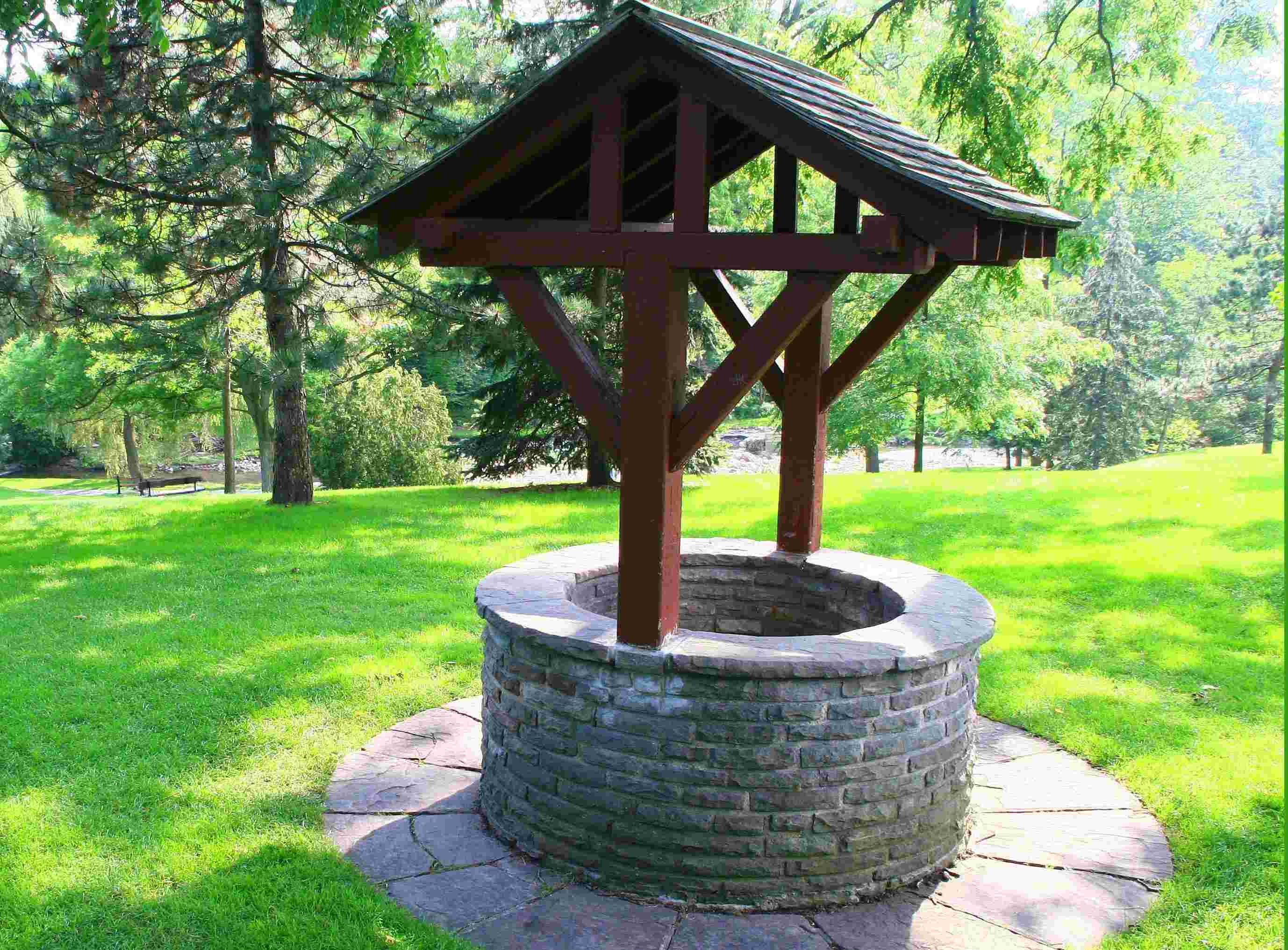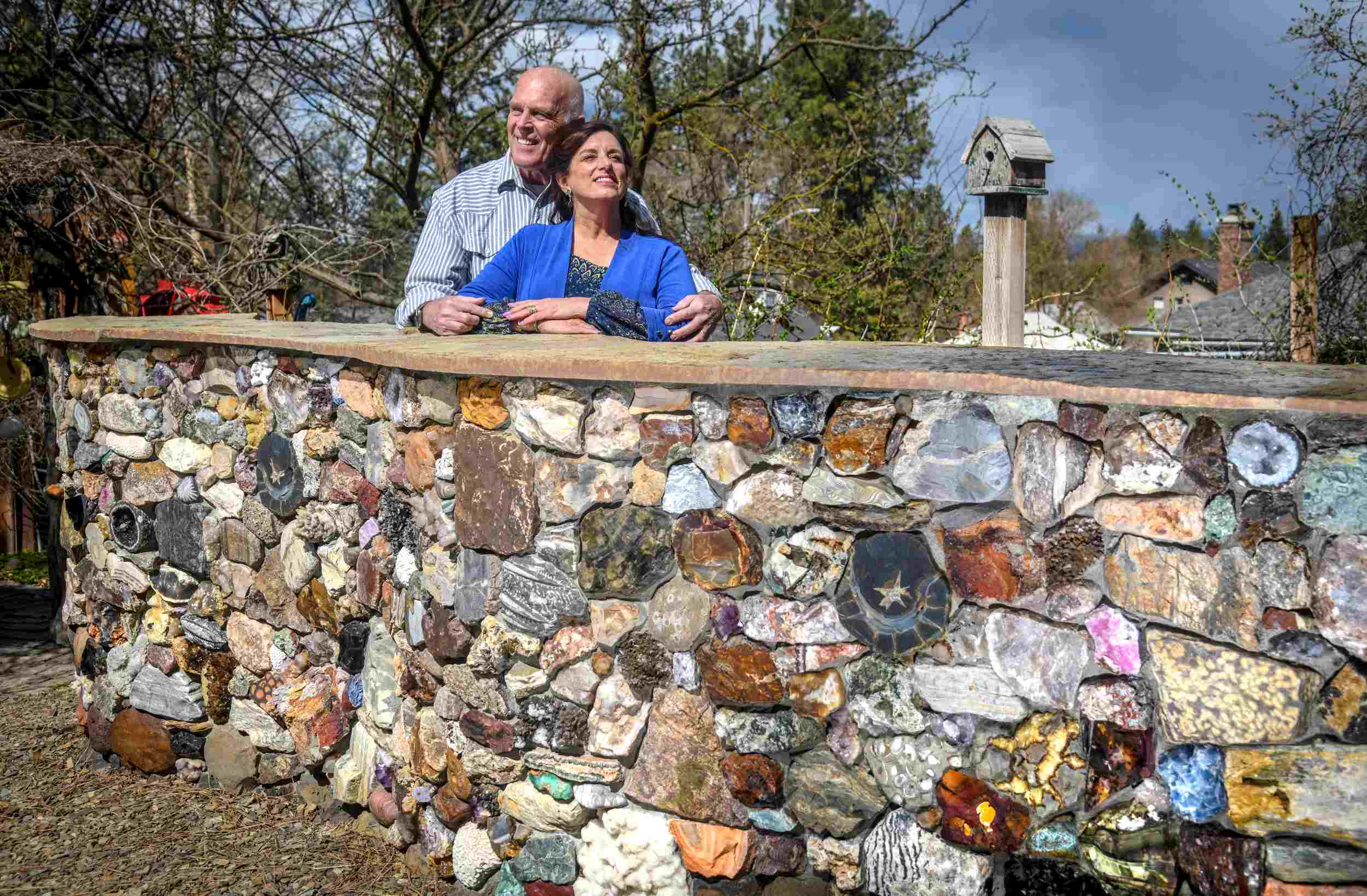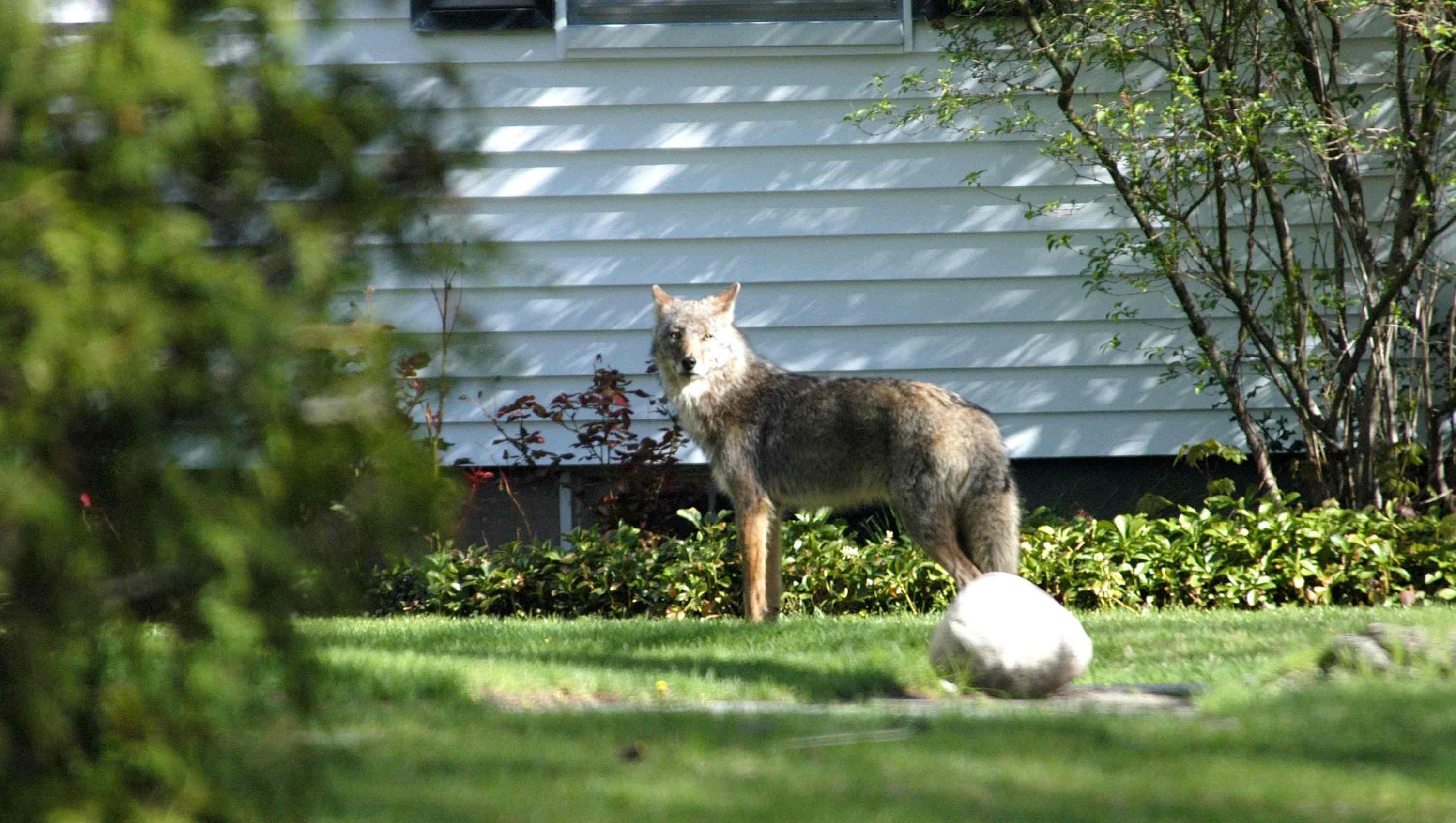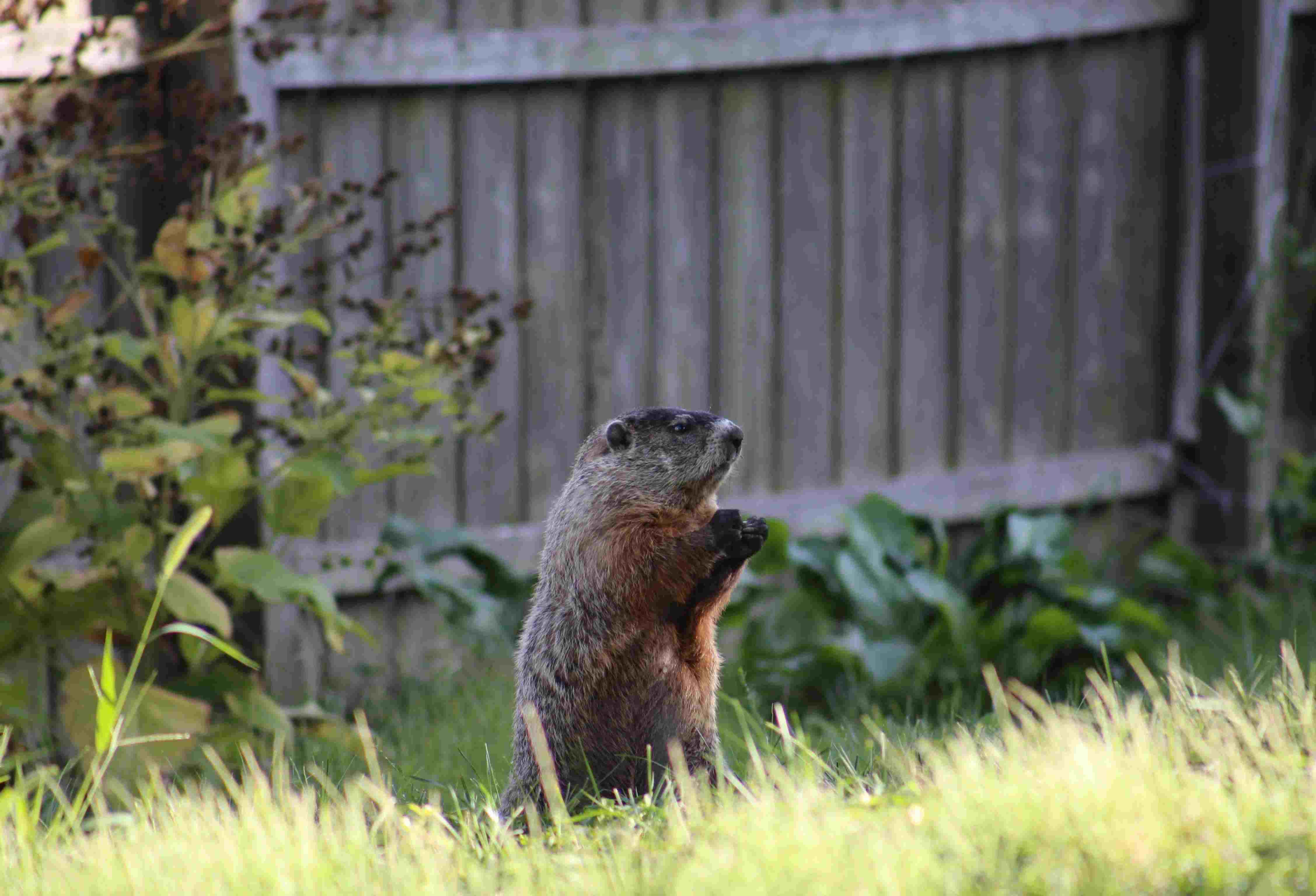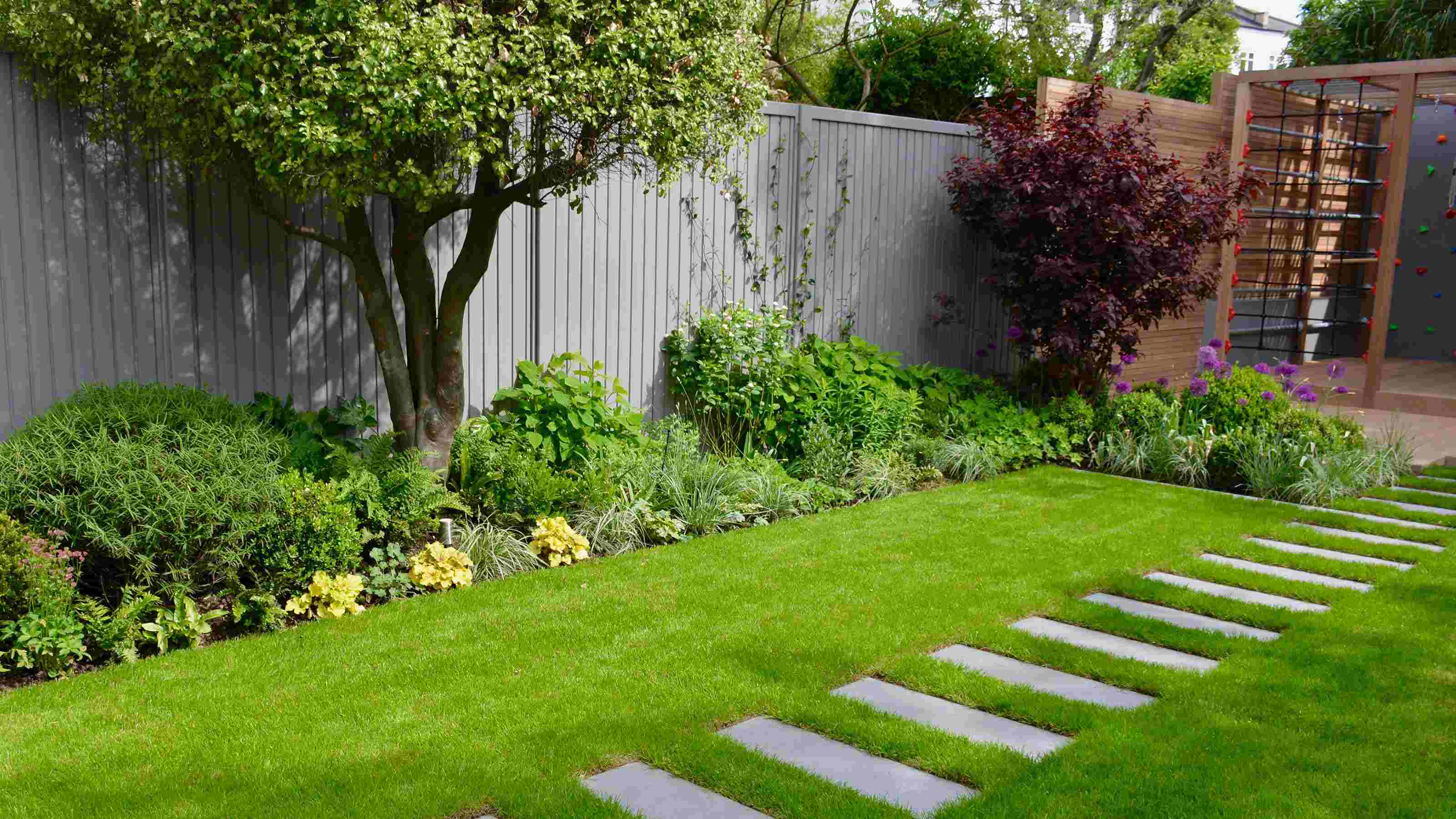Home>Gardening Techniques>DIY Projects>How To Start A Beehive In Your Backyard
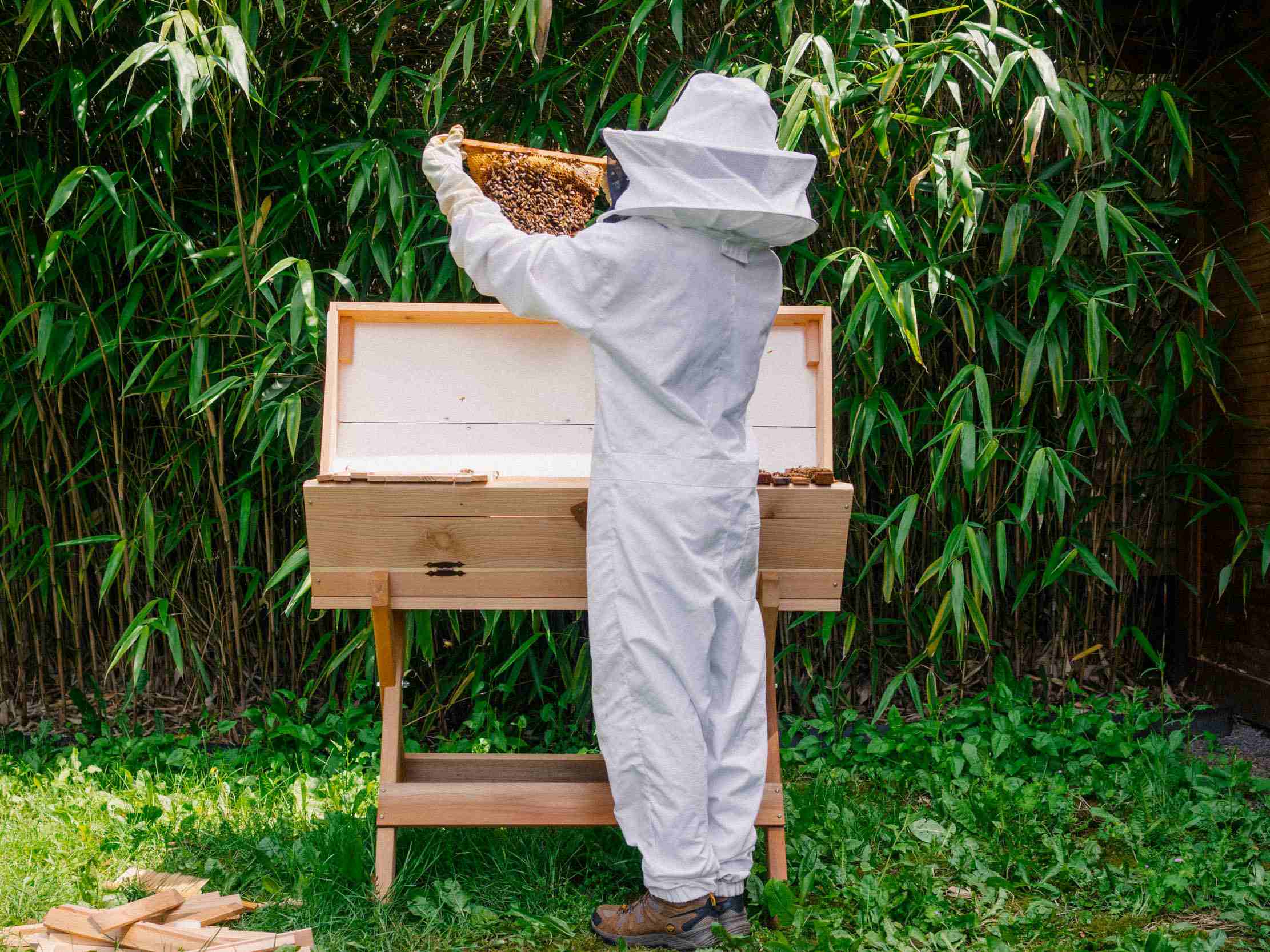

DIY Projects
How To Start A Beehive In Your Backyard
Published: August 5, 2023
Learn how to start a beehive in your backyard with our step-by-step DIY project guide. Create your own thriving bee colony and enjoy the rewards of honey production.
(Many of the links in this article redirect to a specific reviewed product. Your purchase of these products through affiliate links helps to generate commission for Chicagolandgardening.com, at no extra cost. Learn more)
Table of Contents
- Introduction
- Benefits of Starting a Beehive in Your Backyard
- Planning and Preparation
- Choosing the Right Location
- Equipment and Supplies Needed
- Selecting Bee Species
- Acquiring Bees
- Building or Assembling a Hive
- Installing Bees in the Hive
- Providing Adequate Food and Water Sources
- Monitoring and Maintaining the Beehive
- Dealing with Potential Challenges and Issues
- Harvesting Honey and Beehive Products
- Conclusion
Introduction
Welcome to the world of DIY beekeeping! Have you ever thought about starting a beehive in your own backyard? Not only is beekeeping a fascinating and rewarding hobby, but it also plays a crucial role in the pollination of plants and sustainability of our ecosystem. Whether you’re interested in exploring the art of self-sufficiency or simply want to contribute to the preservation of the planet, starting a beehive is a great way to get involved.
While beekeeping may seem daunting at first, with a bit of knowledge and preparation, anyone can become a successful beekeeper. In this article, we’ll guide you through the steps of starting and maintaining a beehive in your backyard.
Before we delve into the specifics, it’s essential to emphasize the importance of bees in our environment. Bees are not only responsible for honey production but also for pollinating a significant portion of the world’s food crops. Unfortunately, bee populations have been declining globally due to various factors, including habitat loss, pesticide use, and climate change. By providing a safe haven for bees in your backyard, you can directly contribute to their survival and the overall health of our ecosystem.
Additionally, starting a beehive in your backyard offers numerous benefits. First and foremost, you can enjoy the delicious rewards of fresh, organic honey right from your own hive. Not only does homegrown honey taste superior to store-bought alternatives, but it also contains health benefits and specific enzymes that can aid in digestion and boost immunity.
Furthermore, having a beehive in your backyard can enhance your garden’s productivity. Bees play a vital role in pollinating flowers, fruits, and vegetables, leading to increased yields and better crop quality. Your garden will flourish with vibrant blooms and bountiful harvests, ensuring a more sustainable and beautiful space.
Lastly, beekeeping can be a therapeutic and educational experience. Observing the intricate workings of a beehive can instill a sense of wonder and appreciation for the natural world. It also provides an opportunity to learn about the complex social structure of bees, their behavior, and their extraordinary communication skills.
Now that we’ve explored the benefits of starting a beehive, let’s dive into the planning and preparation required to set up your own buzzing haven in your backyard.
Benefits of Starting a Beehive in Your Backyard
Starting a beehive in your backyard offers an array of benefits, from personal enjoyment to environmental sustainability. Let’s explore why this rewarding hobby is worth considering:
1. Honey Production: One of the most obvious benefits of having your own beehive is the opportunity to harvest your own delicious honey. Homegrown honey is not only more flavorful than store-bought alternatives, but it also contains trace amounts of local pollen. This can provide relief for seasonal allergies and offer potential health benefits due to its antimicrobial properties.
2. Pollination: Bees are nature’s pollinators, and having a beehive in your backyard means you’ll have an army of diligent workers pollinating your flowers, fruit trees, and vegetable plants. Increased pollination results in improved yields, larger fruits, and more abundant blooms in your garden or orchard.
3. Garden Productivity: By attracting bees to your backyard, not only will they pollinate your plants, but they will also help to improve overall garden productivity. This includes increasing the amount and quality of the harvest, leading to tastier and more vibrant produce.
4. Environmental Impact: Bees are central to maintaining a balanced and sustainable ecosystem. By providing a safe space for bees in your backyard, you are contributing to their protection and well-being. This, in turn, helps to safeguard biodiversity and supports a healthy environment for other plants and animals.
5. Education and Awareness: Beekeeping is a fascinating and educational hobby that offers the opportunity to learn about the intricate and fascinating lives of bees. By becoming a beekeeper, you can gain valuable knowledge about bee behavior, hive dynamics, and the vital role they play in our ecosystem. This knowledge can be shared with family, friends, and the community, raising awareness about the importance of bees and inspiring others to take action.
6. Sustainable Living: Beekeeping aligns perfectly with the principles of self-sufficiency and sustainable living. By producing your own honey, you reduce your reliance on store-bought sweeteners, which often come with packaging and transportation waste. Additionally, beekeeping can inspire you to adopt other sustainable practices, such as organic gardening and reducing chemical pesticide usage.
7. Therapeutic and Relaxing: The act of beekeeping itself can be a calming and rewarding experience. The gentle hum of bees, the rhythmic nature of hive inspections, and the sense of accomplishment in tending to your bees all contribute to a therapeutic and stress-relieving pastime. It allows you to connect with nature and find solace in the peacefulness of the hive.
By starting a beehive in your backyard, you not only reap the rewards of honey and increased garden productivity but also actively contribute to the conservation and preservation of bees and the environment. Now that we understand the benefits, let’s move on to the practical aspects of planning and preparation for your backyard beehive.
Planning and Preparation
Before diving into the exciting world of beekeeping, proper planning and preparation are essential. Taking the time to understand the requirements and gathering the necessary resources will set you up for success. Here are some key steps to consider:
1. Research and Learn: Start by educating yourself on the basics of beekeeping. Read books, attend workshops, and join local beekeeping associations to gain knowledge about bee behavior, hive management, and common issues. Understanding the fundamentals will help you make informed decisions and handle your bees confidently.
2. Local Regulations: Check local regulations and zoning laws regarding beekeeping in your area. Some regions have specific rules and restrictions on hive placement, the number of hives permitted, or the distance from neighboring properties. It’s crucial to comply with these guidelines to ensure a smooth and legal beekeeping experience.
3. Establish Goals: Reflect on your objectives for keeping bees. Are you primarily interested in honey production, pollination, or both? Determining your goals will help you select the appropriate hive type, bee species, and management techniques.
4. Assess Available Space: Evaluate the space available in your backyard to determine how many hives you can accommodate. Consider factors such as proximity to neighbors, access for hive inspections, and availability of forage plants. Bees require a sufficient foraging area to thrive, so ensure you have a diverse range of flowers, trees, and shrubs nearby.
5. Hive Placement: Identify a suitable location for your beehive. Choose an area with good sunlight exposure, away from strong winds, and sheltered from predators. Avoid placing the hive near high-traffic areas or areas that may disturb the bees or cause them stress.
6. Invest in Protective Gear: Beekeeping involves working closely with bees, so investing in proper protective gear is essential to ensure your safety. A beekeeper’s suit, veil, gloves, and sturdy boots will offer protection from bee stings and give you peace of mind during hive inspections and honey harvesting.
7. Gather Equipment: Acquire the necessary equipment and supplies for your beehive. This includes the hive itself (such as a Langstroth, top-bar, or Warre hive), frames, foundation sheets, a smoker, hive tools, and feeders. Research different hive types to determine which one suits your needs and preferences.
8. Source Bees: Decide on the type of bees you want to keep. In most regions, the two most common options are European honey bees or native bees. Decide whether you prefer to purchase a package of bees, a nucleus colony, or catch a swarm. Ensure you obtain bees from a reputable source to ensure healthy and disease-free colonies.
9. Financial Considerations: Beekeeping has some initial costs associated with it, such as purchasing equipment, bees, and protective gear. Factor in these expenses when planning your budget. Keep in mind that ongoing expenses may include hive maintenance, feeding, and potential veterinary care.
10. Readiness for Commitment: Beekeeping requires dedication and regular monitoring of the hive. Be prepared for routine inspections, disease management, and pest control efforts. Understand the time and effort required to maintain healthy and thriving colonies.
Take the time to properly plan and prepare before embarking on your beekeeping journey. These initial steps will pave the way for a successful and enjoyable experience as a backyard beekeeper. Now that you’re ready, let’s delve into the crucial aspect of selecting the right location for your beehive.
Choosing the Right Location
Choosing the right location for your beehive is crucial for the success and well-being of your bees. Consider the following factors when selecting the perfect spot:
1. Sunlight Exposure: Bees thrive in sunny environments, so choose a location that receives plenty of direct sunlight throughout the day. Aim for at least 6 to 8 hours of sunlight to keep the hive warm and stimulate foraging activity.
2. Wind Protection: Strong winds can stress and disturb bees, so it’s important to select a location that offers some wind protection. Place the beehive near a structure, such as a fence or wall, or use a windbreak to shield the hive from gusty winds.
3. Adequate Space: Bees need ample space for foraging. Ensure there are plenty of flowering plants, trees, and shrubs in the vicinity of the hive. Avoid placing the hive in areas with limited access to forage, such as concrete jungles or locations with heavy pesticide use.
4. Accessibility: You’ll need to regularly inspect and attend to your beehive, so choose a location that provides easy access. Avoid placing the hive too far from your house or in hard-to-reach areas that may make routine maintenance and care difficult.
5. Privacy and Safety: Consider both your bees’ safety and the privacy of your neighbors. Place the hive in a way that ensures the bees’ flight path doesn’t directly face your neighbor’s yard or a commonly used area. This will minimize the chances of unsettling encounters and potential conflicts.
6. Water Sources: Bees require access to water for hydration and to regulate hive temperature. Ensure there is a water source nearby, such as a shallow birdbath or a small pond. Providing clean water will prevent your bees from searching for it elsewhere, potentially in less desirable areas like swimming pools.
7. Legal Considerations: Check local regulations or homeowner’s association rules for any specific restrictions on beehive placement. Some areas may have setback requirements, minimum distance from property lines, or other guidelines you need to adhere to. Be sure to comply with these regulations to maintain a harmonious relationship with your community.
8. Observation and Enjoyment: Lastly, choose a location that allows you to observe and enjoy the captivating activities of your bees. Place the hive near a seating area or a garden spot where you can watch the bees coming and going, pollinating flowers, and performing their intricate dances.
Remember, bees are sensitive creatures, and the location of their hive plays a vital role in their overall health and productivity. By considering the factors mentioned above, you can create an ideal environment for your bees to thrive. With the location chosen, it’s time to gather the necessary equipment and supplies for your beehive.
Equipment and Supplies Needed
When it comes to beekeeping, having the right equipment and supplies is essential for the successful management of your beehive. Here’s a list of the key items you’ll need:
1. Hive: The hive is the home for your bees. There are several types of hives available, including Langstroth, top-bar, and Warre hives. Choose a hive that aligns with your goals and preferences.
2. Frames and Foundation: Frames are used inside the hive to provide support for the bees’ wax comb. Foundation sheets, usually made of beeswax or plastic, are inserted into the frames to guide the bees on comb building.
3. Smoker: A smoker is an essential tool used to calm the bees during hive inspections. By puffing cool smoke into the hive, bees become less defensive, allowing you to work with them more comfortably.
4. Hive Tools: Hive tools come in various shapes and sizes, but all are designed to assist in manipulating the hive and frames. They are used to pry open the hive, separate frames, scrape off propolis, and remove excess beeswax.
5. Protective Gear: Safety should always be a priority when working with bees. A beekeeper’s suit, complete with a hat or veil, gloves, boots, and coveralls, will protect you from bee stings and provide peace of mind during hive inspections.
6. Feeders: Feeders are used to provide food for the bees during times of nectar scarcity, such as during winter or when establishing new colonies. There are various types of feeders, including entrance feeders, frame feeders, and top feeders.
7. Hive Stand: A sturdy hive stand elevates the hive off the ground, helping to keep it dry and protecting it from intrusive pests. It also improves ventilation and makes hive inspections more convenient.
8. Bee Brush: A bee brush with soft bristles allows you to gently remove bees from frames or other hive components when necessary without causing harm or agitation.
9. Queen Excluder: A queen excluder is a mesh-like device that allows worker bees to pass through but restricts the queen’s movement. It ensures she stays in the brood chamber and prevents her from laying eggs in honey supers.
10. Beekeeping Suit and Accessories: Along with protective gear, consider other accessories such as a beekeeping jacket, beekeeping gloves, and a beekeeping veil. These items provide additional protection and comfort during hive inspections.
11. Beekeeping Books and Resources: To further your knowledge and understanding of beekeeping, investing in educational resources such as books, online courses, or joining local beekeeping associations can be invaluable.
Remember, beekeeping equipment and supplies may vary depending on the hive type and your specific management approach. Research and gather the necessary items before welcoming your bees into their new home. With equipment in hand, it’s time to delve into the fascinating world of bee species selection.
Selecting Bee Species
When it comes to beekeeping, selecting the right bee species is an important decision that will impact the success and management of your beehive. Here are some commonly considered bee species:
1. European Honey Bees (Apis mellifera): European honey bees are the most common and widely kept bee species in beekeeping. They are known for their honey production, gentle temperament, and ability to adapt to various climates. European honey bees are excellent pollinators and are available in different subspecies that have specific traits and characteristics.
2. Native Bees: Native bees refer to a range of bee species that are native to specific regions. These bees have evolved alongside local plants and are well-suited to the local environment. Native bees often have different behaviors and nesting habits compared to European honey bees. They can be an excellent choice for beekeepers interested in supporting local ecosystems and promoting biodiversity.
3. Bumblebees: Bumblebees are larger and more robust than honey bees. They are excellent pollinators and can be beneficial for specific crops or greenhouse settings. However, bumblebees are generally not suitable for traditional beehive management and are more commonly used in commercial pollination services.
4. Africanized Honey Bees: Africanized honey bees, also known as “killer bees,” are a hybrid of European and African honey bees. They are known for their aggressive nature and defensive behavior. Due to their tendency to swarm and sting when they feel threatened, Africanized honey bees are not recommended for inexperienced beekeepers.
5. Carniolan Bees: Carniolan bees are a subspecies of the European honey bee known for their gentle temperament, rapid spring buildup, and resistance to harsh winter conditions. They are highly productive and suitable for areas with shorter summers or cooler climates.
When selecting a bee species, consider your goals, local climate, and available resources. European honey bees are a popular choice for beginners due to their availability, gentle nature, and high honey production. Native bee species can also be a great option for those interested in native plant pollination and conserving local ecosystems. It’s important to source bees from reputable suppliers to ensure healthy and disease-resistant colonies.
Once you’ve decided on the bee species, it’s time to acquire your bees. In the next section, we’ll explore the different methods of obtaining bees for your beehive.
Acquiring Bees
Now that you’ve decided on the bee species for your beehive, it’s time to acquire your bees. There are a few different methods to consider:
1. Purchasing Package Bees: Purchasing a package of bees is a common and convenient way to start your beehive. Packages typically include a queen bee and a certain number of worker bees, usually shipped in a screened box. This option allows you to establish a new colony quickly, especially if you’re starting from scratch.
2. Nucleus Colonies (Nucs): Nucs consist of a small, established colony with a queen, several frames of brood, bees, and stores. Acquiring a nuc provides a head start as it already contains a laying queen and worker bees, making it easier to establish a thriving hive. Nucs are often available for purchase locally, reducing stress during transportation.
3. Swarm Capture: Capturing a swarm is an exciting and cost-effective way to acquire bees. Swarms are groups of bees that have left their original hive to establish a new colony. You can attract a swarm using swarm traps or by catching them when they land on a tree or structure. However, swarm capture requires experience and knowledge, so it’s recommended for more experienced beekeepers.
4. Beekeeping Clubs and Associations: Local beekeeping clubs and associations can be a valuable resource for acquiring bees. They may have members who are willing to sell or donate bees, offer guidance on capturing swarms, or provide connections to reputable bee breeders or suppliers.
When acquiring bees, it’s essential to ensure their health and quality. Purchase bees from reputable and trusted sources to minimize the risk of introducing diseases or weak genetics to your hive. Look for suppliers with good reviews, reliable customer support, and a focus on bee health and sustainability.
Timing is also critical when acquiring bees. Bees are typically available for purchase or capture during the spring months when colonies are building up and swarming. It’s important to plan ahead and place your orders or set up swarm traps in advance to secure your bees.
Remember, beekeeping is a continuous learning process, and acquiring bees is just one step in establishing a thriving hive. In the next section, we’ll explore the necessary steps for building or assembling your beehive.
Building or Assembling a Hive
Building or assembling a hive is an essential step in setting up your beekeeping operation. Here’s what you need to know:
1. Hive Components: A beehive consists of several components, including the bottom board, brood boxes, honey supers, frames, and covers. Each component plays a specific role in the hive’s structure and function.
2. Hive Type: Choose a hive type that best suits your needs and preferences. Some popular options include the Langstroth hive, top-bar hive, and Warre hive. Research each type to understand their differences in management, brood rearing, honey storage, and feeding.
3. Hive Construction: If you prefer a DIY approach, you can build your hive from scratch using plans and instructions widely available online or in beekeeping books. This allows for customization and can be a rewarding project. Ensure the materials used are durable, weather-resistant, and non-toxic for the bees.
4. Hive Assembly: If you opt for pre-built hive components, assembling them is straightforward. Follow the manufacturer’s instructions to assemble the hive. This may involve attaching frames to the brood boxes, fitting foundation sheets, and securing covers and bottom boards in place.
5. Proper Hive Spacing: Ensure proper spacing between frames and hive components. The appropriate spacing allows the bees to move freely within the hive for inspection, prevents overcrowding, and ensures optimal bee health and productivity.
6. Painting and Weatherproofing: Painting the exterior of your hive with light colors helps reflect sunlight and maintain a cool hive temperature. Additionally, applying a weatherproofing sealant protects the hive from moisture and extends its lifespan.
7. Hive Placement: Once assembled, place your hive in the chosen location. Ensure it is level and stable to prevent tilting or toppling over. Make sure the hive is easily accessible for routine inspections and maintenance.
8. Hive Numbering and Record Keeping: Assign a unique number or identifier to each hive to ease record-keeping and monitoring. Keeping detailed records helps track the hive’s progress, queen performance, and potential issues encountered during inspections.
Whether you choose to build your hive or assemble pre-built components, pay attention to detail and ensure the hive is sturdy and well-constructed. A properly built and maintained hive provides a comfortable home for your bees and sets the stage for a successful and productive beehive. Next, we’ll guide you through the process of installing bees into your hive.
Installing Bees in the Hive
Installing bees into your hive is an exciting and crucial step in establishing a thriving colony. Here’s a step-by-step guide to help you with the process:
1. Prepare the Hive: Ensure your hive is set up and ready before the bees arrive. Check that all the components are in place, including frames with foundation sheets, and that the hive is leveled and stable.
2. Choose the Installation Method: There are a few methods for installing bees into the hive, depending on the type of bees you’ve acquired. The two most common methods are the shaking method and the direct placement method.
3. Shaking Method: If you have purchased a package or a nuc, the shaking method is commonly used. Remove a few frames from the hive and gently shake or pour the bees into the hive. Be cautious not to harm the queen during this process.
4. Direct Placement Method: The direct placement method is used when installing a swarm or a captured colony. Place the swarm or colony directly into the hive after ensuring the queen is inside. If you have captured a swarm, gently brush them into the hive if necessary.
5. Add Frames and Close the Hive: Once the bees are in the hive, carefully place the frames back into the hive, leaving enough space for the bees to move freely between the frames. Close the hive by adding the inner cover and outer cover, ensuring they are secure.
6. Provide Food and Water: Initially, it is essential to provide food for the bees until they establish themselves and find natural forage. Consider using a feeder to provide a sugar syrup solution or an alternative food source. Also, ensure there is a nearby water source for the bees to access easily.
7. Monitor and Observe: After installing the bees, monitor them regularly to ensure they are settling in and building comb. Look for signs of a healthy queen, such as eggs and brood patterns, and check for any signs of pests or diseases.
8. Handle with Care: When handling the bees during installation or subsequent inspections, it’s important to be calm, gentle, and slow in your movements. Avoid sudden movements or disturbing the hive excessively to minimize stress for the bees.
Remember, installing bees into the hive is just the beginning of your beekeeping journey. From this point forward, regular hive inspections, proper management, and care will be crucial for the success and health of your colony. As you continue your beekeeping journey, focus on learning and adapting to the needs of your bees. In the next section, we’ll discuss the importance of providing adequate food and water sources for your hive.
Providing Adequate Food and Water Sources
Ensuring that your bees have access to adequate food and water sources is essential for their survival and productivity. Here are some considerations for providing sustenance to your hive:
1. Natural Forage: Encourage a diverse range of flowering plants in your vicinity. Planting bee-friendly flowers, herbs, and trees provides a natural source of nectar and pollen for your bees. Aim for a continuous and diverse bloom throughout the seasons to support your colony’s nutritional needs.
2. Water Sources: Bees require access to water for hydration and nest cooling. Provide a nearby water source, such as a shallow birdbath or pond, with small rocks or floating platforms for the bees to perch on while drinking water. Renew the water regularly to prevent the buildup of algae or debris.
3. Sugar Syrup: During times of nectar scarcity, such as early spring or late summer, supplementing the bees’ diet with a sugar syrup solution can help ensure their survival. Prepare a simple syrup by dissolving white granulated sugar in warm water. The ratio typically used is 1:1 (one part sugar to one part water) for spring feeding and 2:1 (two parts sugar to one part water) for fall feeding. Feed the syrup using a feeder inside the hive.
4. Pollen Substitutes: In some cases, when natural pollen sources are limited, you may need to provide pollen substitutes. Commercially available pollen substitutes or patties can be fed to the bees to ensure they have a balanced diet and the necessary nutrients for brood rearing.
5. Be Mindful of Pesticides: Keep your bees safe by minimizing exposure to pesticides. Avoid using chemical pesticides in your garden, or if necessary, use organic alternatives that are less harmful to bees. Be aware of neighboring farms or gardens that may use pesticides and discuss with the owners to ensure the safety of your bees.
6. Honey Supers: Once your colony is established and has sufficient honey stores, you can add honey supers. These are additional boxes for the bees to store surplus honey. Harvesting honey from the supers should only be done when the bees have enough to sustain themselves through the winter or when they have excess to share.
7. Regular Monitoring: Regularly monitor the honey stores in the hive to ensure that the bees have enough food to sustain them. Assess the colony’s strength and take appropriate action if food supplies are low, such as providing additional feeding or combining weaker colonies with stronger ones.
8. Hive Maintenance: Regularly inspect and maintain your hive to ensure it remains in good condition. Check for signs of disease, pests, or mold that could impact the bees’ health and food supply. Proper ventilation and hive insulation can also help regulate temperature and prevent condensation, ensuring the colony’s well-being.
By providing your bees with ample food and water sources, you are supporting their health, productivity, and overall well-being. A well-nourished colony is more likely to thrive and exhibit strong foraging behavior. As you continue your beekeeping journey, remember to adapt your feeding practices according to the seasonal needs and requirements of your colony. In the next section, we’ll explore the importance of monitoring and maintaining your beehive.
Monitoring and Maintaining the Beehive
Regular monitoring and maintenance of your beehive are essential for the health and well-being of your colony. Here are some key aspects to consider:
1. Hive Inspections: Conduct regular hive inspections to assess the overall health of the colony. Look for signs of disease, pests, or abnormalities in brood patterns. Check the honey stores and ensure the queen is laying eggs. Inspections allow you to address any issues promptly and take necessary action.
2. Pest and Disease Management: Be vigilant in monitoring and managing pests and diseases that can affect your bees. This includes common threats like Varroa mites, small hive beetles, and wax moths. Implement appropriate pest management strategies, such as using screened bottom boards, applying organic treatments, or practicing Integrated Pest Management (IPM) techniques.
3. Swarm Prevention and Management: Take measures to prevent swarming, a natural reproductive behavior of bees. Regularly assess the colony’s population and honey stores to ensure sufficient space for the bees. Employ swarm prevention techniques like splitting the hive, adding supers, or using swarm traps to capture and manage swarms when necessary.
4. Queen Management: Monitor the performance of the queen regularly. Look for signs of a healthy queen, such as a solid brood pattern and abundant worker bees. If the queen is failing or weak, take steps to replace her with a new queen or introduce a queen cell for a colony to raise a new queen themselves.
5. Hive Maintenance: Keep the hive in good condition by maintaining cleanliness and hive structure. Regularly clean hive components, remove excess wax, and replace old or damaged frames. Ensure proper hive ventilation and insulation to regulate temperature and prevent moisture buildup. Repair or replace any damaged hive components as needed.
6. Record Keeping: Maintain detailed records of hive inspections and activities. Note observations, hive conditions, and any actions taken. These records will help track the colony’s progress, identify trends, and make informed decisions for future management.
7. Seasonal Adjustments: Adapt your management practices according to the seasons. Provide supplementary feeding during periods of nectar scarcity, and ensure enough honey stores for winter survival. Adjust hive ventilation and insulation as needed for climate changes. Stay informed about local bloom times and typical seasonal bee behavior to manage your hive effectively.
8. Continuing Education: Stay updated on current beekeeping practices and techniques through books, online resources, and beekeeping associations. Attend workshops and participate in educational events to enhance your knowledge and skills.
Regular monitoring and maintenance of your beehive are key to successful beekeeping. By being proactive and attentive to the needs of your colony, you can support the health, productivity, and overall well-being of your bees. In the next section, we’ll discuss potential challenges and issues you may encounter as a beekeeper and how to address them.
Dealing with Potential Challenges and Issues
As a beekeeper, you may encounter various challenges and issues along your journey. Here are some common ones and how to address them:
1. Varroa Mites: Varroa mites are one of the most significant threats to honey bee colonies. Implement an integrated pest management (IPM) plan to monitor and control mite populations. Treatments can include organic acids, essential oils, or natural mite control methods. Regularly inspect and assess mite levels to prevent their detrimental impact on your bees.
2. Queen Problems: Queen issues can arise, such as a failing queen, queenlessness, or aggression from a poorly mated queen. If you suspect queen problems, take steps to replace the queen by introducing a new queen or allowing the colony to raise a new one from queen cells. Maintain a supply of healthy and well-mated queen bees for replacement if needed.
3. Hive Diseases: Be vigilant in monitoring and managing hive diseases like American Foulbrood (AFB) and European Foulbrood (EFB). Familiarize yourself with symptoms and signs, and take appropriate action if you suspect a disease outbreak. This may involve contacting local authorities, burning infected equipment, and implementing suitable management practices to prevent further spread.
4. Swarming: Swarming is a natural reproductive behavior of bees, but it can lead to colony loss and safety concerns if not managed properly. Implement swarm prevention techniques such as regular inspections, providing ample space, and performing colony manipulations as necessary. If a swarm does occur, be prepared to capture and relocate it to prevent nuisance or potential conflicts with neighbors.
5. Pesticide Exposure: Take precautions to minimize pesticide exposure to your bees. Ensure that neighboring farmlands and gardens follow responsible pesticide practices. Communicate with neighboring landowners and educate them about the importance of bee-friendly practices. Consider placing the hives in pesticide-free areas or using flight barriers to redirect bees away from potential pesticide sources.
6. Robbing Behavior: Robbing occurs when other colonies attempt to steal resources from weaker or struggling colonies. To mitigate robbing behavior, ensure strong colonies have adequate honey stores, maintain hive entrances that can be easily defended, and reduce opportunities for robbing, such as excessive spillage or open feeding.
7. Winter Preparation: Adequate winter preparation is crucial for the survival of your bees. Ensure colonies have sufficient honey stores for the winter months. Insulate hives or use moisture-absorbing materials to minimize condensation. Familiarize yourself with region-specific wintering techniques to help your bees survive the colder months.
8. Continuing Education: Stay informed and educated about the latest research and best practices in beekeeping. Join local beekeeping associations, attend workshops, and connect with experienced beekeepers. Networking and continuously improving your knowledge and skills will help you navigate potential challenges more effectively.
Remember, beekeeping is a dynamic endeavor, and challenges will arise. By staying informed, closely monitoring your hives, and taking proactive measures, you can successfully navigate and mitigate potential challenges and issues that may arise. In the final section, we’ll explore the rewarding aspect of harvesting honey and other beehive products.
Harvesting Honey and Beehive Products
One of the most rewarding aspects of beekeeping is harvesting the delicious honey and other beehive products. Here’s what you need to know about the process:
1. Honey Harvesting: The honey harvesting process typically occurs during the late summer or early fall when honey production is at its peak. Ensure that your honey supers are filled with capped honey cells before harvesting. Remove the supers from the hive and carefully brush off any bees. Extract the honey using a honey extractor or crush and strain method. Strain the honey to remove any wax or impurities before storing it in clean, airtight containers.
2. Beeswax Harvesting: Beeswax is a versatile and valuable product that can be used for making candles, lip balms, soaps, and more. Collect beeswax by scraping the cappings from honey frames or from comb that has been removed during hive inspections. Melt the beeswax using a double boiler or solar wax melter, then filter and mold it into desired shapes.
3. Propolis Collection: Bees collect propolis from tree buds and use it to seal cracks and crevices within the hive. Propolis has antimicrobial properties and can be used for medicinal purposes or as a natural adhesive. Collect propolis by scraping it from hive components, then store it in airtight containers for later use.
4. Royal Jelly Extraction: Royal jelly is a nutrient-rich substance produced by worker bees and used to feed and nurture developing queens. Extracting royal jelly requires specialized equipment and techniques. It’s often done using artificial queen cups or grafting tools to collect the jelly from the queen cell. Royal jelly is highly perishable and is often consumed fresh or used in cosmetic and dietary supplements.
5. Pollen Collection: Pollen is an excellent source of protein and nutrients for bees. Collecting pollen involves placing specialized traps outside the hive entrance. As bees enter the hive, the traps scrape off the pollen from their legs, collecting it in a tray. Store the collected pollen in a cool, dry place or freeze it to preserve its nutritional value.
6. Honey Value-Added Products: Beekeepers often expand their product offerings by creating value-added honey products. This can include flavored honey, creamed honey, infused honey, or honey-based spreads. Be creative and explore different recipes and flavor combinations to showcase the unique attributes of your honey.
7. Safety Considerations: When harvesting, ensure you have the necessary protective gear, including a beekeeper’s suit, gloves, and veil. Take precautions to avoid any cross-contamination or exposure to potential allergens. Keep a clean and organized harvest area to maintain product quality and prevent contamination.
8. Share and Sell: Enjoy the fruits of your labor by sharing or selling your harvested honey and beehive products. Share the delicious honey with family and friends, or consider selling it locally at farmers’ markets, through online platforms, or in specialty stores. Label your products correctly, adhering to local regulations and standards.
Harvesting honey and other beehive products completes the cycle of beekeeping, allowing you to savor the rewards of your hard work and dedication. Appreciate the flavors and benefits of your own locally produced honey, wax, propolis, and other valuable hive products. Remember to always prioritize the well-being of your bees and maintain sustainable practices to ensure a thriving and healthy apiary.
Conclusion
Congratulations on embarking on your journey into the fascinating world of beekeeping! By starting a beehive in your backyard, you have not only embarked on a fulfilling and rewarding hobby but also become a vital contributor to the preservation of bees and the sustainability of our ecosystem. Throughout this article, we have explored the benefits of beekeeping, the importance of planning and preparation, selecting bee species, acquiring bees, building or assembling a hive, installing bees, providing food and water sources, monitoring and maintaining the hive, addressing potential challenges, and the joy of harvesting honey and other beehive products.
Beekeeping requires patience, dedication, and a continuous willingness to learn and adapt. As you embark on this journey, remember to prioritize the health and well-being of your bees. Regular monitoring, proper hive maintenance, and addressing challenges promptly will be crucial for their success. Stay connected with fellow beekeepers, participate in educational opportunities, and continue expanding your knowledge to become a skilled and responsible steward of your colony.
Enjoy the incredible rewards that beekeeping offers – the delicious honey, the enchanting process of observing these incredible creatures, and the sense of accomplishment as you contribute to the preservation of bees and the vitality of our environment.
Now, go forth and explore the joys of beekeeping, making a positive impact on the world, one bee at a time!



